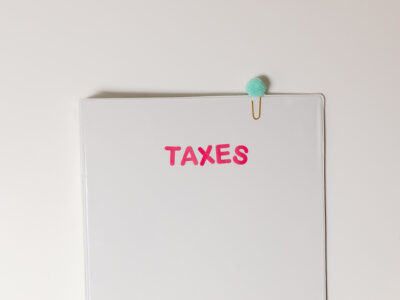Personal tax rates unchanged for 2022–2023
In the Budget, the Government did not announce any personal tax rates changes. The Stage 3 tax changes commence from 1 July 2024, as previously legislated.
The 2022–2023 tax rates and income thresholds for residents are unchanged from 2021–2022:
- taxable income up to $18,200 – nil;
- taxable income of $18,201 to $45,000 – 19% of excess over $18,200;
- taxable income of $45,001 to $120,000 – $5,092 plus 32.5% of excess over $45,000;
- taxable income of $120,001 to $180,000 – $29,467 plus 37% of excess over $120,000; and
- taxable income of more than $180,001 – $51,667 plus 45% of excess over $180,000.
Need help to save tax? Book your free consult with Horizon today.
Stage 3: from 2024–2025
The Stage 3 tax changes will commence from 1 July 2024, as previously legislated. From 1 July 2024, the 32.5% marginal tax rate will be cut to 30% for one big tax bracket between $45,000 and $200,000. This will more closely align the middle tax bracket of the personal income tax system with corporate tax rates. The 37% tax bracket will be entirely abolished at this time.
Therefore, from 1 July 2024, there will only be three personal income tax rates: 19%, 30% and 45%. From 1 July 2024, taxpayers earning between $45,000 and $200,000 will face a marginal tax rate of 30%. With these changes, around 94% of Australian taxpayers are projected to face a marginal tax rate of 30% or less.
Low income offsets: LMITO temporarily increased, LITO retained
The low and middle income tax offset (LMITO) will be increased by $420 for the 2021–2022 income year so that eligible individuals will receive a maximum LMITO benefit up to $1,500 for 2021–2022 (up from the current maximum of $1,080).
This one-off $420 cost of living tax offset will only apply to the 2021–2022 income year. Importantly, the Government did not announce an extension of the LMITO to 2022–2023. So it remains legislated to only apply until the end of the 2021–2022 income year (albeit up to $1,500 instead of $1,080).
The Government said the LMITO for 2021–2022 will be paid from 1 July 2022 to more than 10 million individuals when they submit their tax returns for the 2021–2022 income year. Other than those who do not require the full offset to reduce their tax liability to zero, all LMITO recipients will benefit from the full $420 increase. That is, the proposed one-off $420 cost of living tax offset will increase the maximum LMITO benefit in 2021–2022 to $1,500 for individuals earning between $48,001 and $90,000 (but phasing out up to $126,000). Those earning up to $48,000 will also receive the $420 one-off tax offset on top of their existing $255 LMITO benefit (phasing up for incomes between $37,001 and $48,000).
All other features of the current LMITO remain unchanged (including that it will only apply until the end of the 2021–2022 income year). Consistent with the current LMITO, taxpayers with incomes of $126,000 or more will not receive the additional $420.
As already noted, the Government has proposed that eligible taxpayers with income up to $126,000 will receive the additional one-off $420 cost of living tax offset for 2021–2022 on top of their existing LMITO benefit.
Currently, the amount of the LMITO for 2021–2022 is $255 for taxpayers with a taxable income of $37,000 or less. Between $37,000 and $48,000, the value of LMITO increases at a rate of 7.5 cents per dollar to the maximum amount of $1,080. Taxpayers with taxable incomes from $48,000 to $90,000 are eligible for the maximum LMITO of $1,080. From $90,001 to $126,000, LMITO phases out at a rate of 3 cents per dollar.
Low income tax offset (unchanged)
The low income tax offset (LITO) will also continue to apply for the 2021–2022 and 2022–2023 income years. The LITO was intended to replace the former low income and low and middle income tax offsets from 2022–2023, but the new LITO was brought forward in the 2020 Budget to apply from the 2020–2021 income year.
The maximum amount of the LITO is $700. The LITO will be withdrawn at a rate of 5 cents per dollar between taxable incomes of $37,500 and $45,000 and then at a rate of 1.5 cents per dollar between taxable incomes of $45,000 and $66,667.
Medicare levy low-income thresholds increased
For the 2021–2022 income year, the Medicare levy low-income threshold for singles will be increased to $23,365 (up from $23,226 for 2020–2021). For couples with no children, the family income threshold will be increased to $39,402 (up from $39,167 for 2020–2021). The additional amount of threshold for each dependent child or student will be increased to $3,619 (up from $3,597).
For single seniors and pensioners eligible for the SAPTO, the Medicare levy low-income threshold will be increased to $36,925 (up from $36,705 for 2020–2021). The family threshold for seniors and pensioners will be increased to $51,401 (up from $51,094), plus $3,619 for each dependent child or student.
Legislation is required to amend these thresholds, and a Bill will be introduced shortly.
COVID-19 test expenses to be deductible
The Budget papers confirm that the costs of taking COVID-19 tests – including polymerase chain reaction (PCR) tests and rapid antigen tests (RATs) – to attend a place of work are tax deductible for individuals from 1 July 2021. In making these costs tax deductible, the Government will also ensure FBT will not be incurred by businesses where COVID-19 tests are provided to employees for this purpose.
This measure was previously announced on 8 February 2022.


 FBT return action checklist
FBT return action checklist